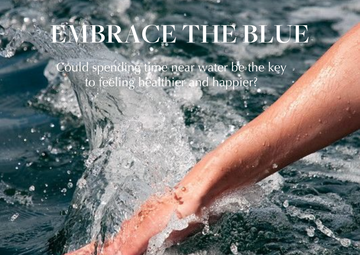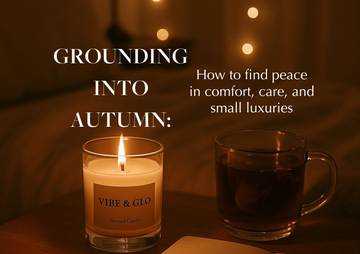If you’ve ever drifted off to sleep listening to the sound of waves or taken a refreshing dip in a lake, ocean, or even pool, you know the calming power of water. The ancient Greeks bathed in mineral-rich thermal spring water to promote wellness. Similarly, doctors in Victorian times often prescribed seaside visits as part of their treatment plans. Today, science is catching up, offering research-backed proof that water truly has the power to heal. Here’s how you can tap into the benefits of “blue therapy.”
Join the blue gym
Nature has long been known to soothe the soul. During the pandemic, many of us rediscovered the value of green spaces, but blue spaces—natural bodies of water—offer similar benefits. “Blue space” refers aptly to blue water in oceans, seas, rivers, lakes, ponds, streams, and waterfalls. Dr. Catherine Kelly, a geography expert and author of Blue Spaces: How & Why Water Can Make You Feel Better, explains that research increasingly shows how these environments benefit us both physically and mentally.
The idea of blue space gained momentum in the UK over a decade ago, supported by the Department of Health and the Peninsula Medical School in Plymouth. Since then, wellness advocates and water enthusiasts have embraced the concept. The premise is simple: being near water, whether through swimming, walking by the shore, or even gazing at a water view, helps reduce stress, promote physical activity, and foster stronger community connections. One study found that living near or visiting water is linked to lower rates of depression, anxiety, and other mental health challenges—and simply enjoying a scenic water view can encourage deep relaxation.
A Space to Disconnect
Ocean advocate and blue health coach Lizzi Larbalestier describes her deep connection to the Cornish coastline, where she helps others access the mental health benefits of the sea. “People often arrive anxious and overwhelmed by the pace of city life and constant digital demands. But stepping into blue space helps them slow down, breathe, and reawaken their senses,” she shares.
Blue space is the perfect counterbalance to our time-crunched, screen-focused lifestyles. “It’s a sensory landscape,” says Dr. Kelly. “We hear water lapping or rushing, see the shifting colors of the ocean or stream, feel sand underfoot, smell the salt air or wildflowers along a canal, and taste salt on our skin after a swim.”
The result? A calmer mind, without effort. In blue space, experiences become physical and tactile, not filtered through a screen. “Water is medicine,” Lizzi affirms. “In our fast-paced world, the peace and presence water provides is both undervalued and underused. It reminds us that we are part of a greater ecosystem, not isolated or disconnected, and that we each have a role to play.”
The Body Loves Blue
Spending time near water naturally encourages movement—whether it’s surfing, swimming, or a peaceful riverside walk. These activities bring well-documented benefits: improved heart health, stronger bones, and the release of mood-boosting endorphins. “Being active in, on, or near water increases levels of serotonin and dopamine,” explains Dr. Kelly.
There’s also growing evidence that swimming in natural waters can help ease anxiety, digestive issues, menopause symptoms, and more. “Cold-water swimming stimulates the vagus nerve, which can trigger an anti-inflammatory response linked to improved health outcomes,” she adds.
Water and Mental Wellness
Why does being near water make us feel better? According to Dr. Kelly, there’s a biological reason: “Levels of stress hormones like adrenaline and cortisol drop, breathing slows, and heart rate stabilizes. As a result, we feel calmer, and our mood lifts.”
This “blue mind” state makes mindfulness more accessible. Water’s meditative quality draws us into the present moment, helping us pause and reset. “Looking out over a vast body of water can inspire awe and perspective—it reminds us of the bigger picture,” says Dr. Kelly.
5 Ways to Soak Up Blue Space
-
Change Your Walking Route
Add nearby rivers, lakes, or canals to your weekly walks by checking local maps. Walking by water is a simple and powerful way to engage with blue space. -
Relax With Water Sounds
Water sounds promote calm and creativity. Try adding a small fountain to your home or download an app with ocean or river soundscapes. -
Take a Restorative Bath
A warm bath can offer many of the same benefits as the sea. Add mineral salts to mimic the healing qualities of natural seawater. -
Try a Cold Shower
Channel your inner Wim Hof and end your shower with a blast of cold water. Start with 30 seconds and gradually build up to two or three minutes. The cold stimulates circulation and an anti-inflammatory response. -
Swim in Nature (If You Can)
If you're near a safe body of water, go for a dip. Even just wading or floating can help you connect deeply with your surroundings and reset your nervous system. Be cautious of deep water or still water and ensure you have a friend nearby. With some safety precautions in place, you can fully relax and enjoy the benefits of blue space.







